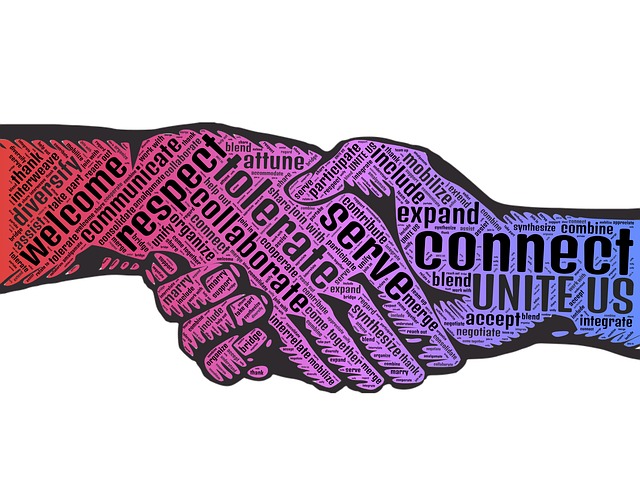Civility
Civility involves treating others with dignity and respect, and acting with regard to other’s feelings.

Disrespect must not be confused with legitimate comment and/or advice from managers and supervisors on the work performance or work-related behaviour of an individual or group. Feedback on work performance or work-related behaviour differs from incivility or harassment in that feedback is intended to assist employees to improve work performance or the standard of their behaviour.
Civility requires that even the most critical feedback be delivered respectfully, privately, and courteously.
Incivility
Incivility deals with a broad range of behaviours including, but not limited to, unprofessional behaviour; rudeness; shouting or swearing; intimidation or bullying; threatening comments or behaviours/actions; unsolicited and unwelcome conduct, comment (oral or written including email communication), gestures, actions or contact that cause offense, humiliation, or physical or emotional harm to any individual.
Incivility can be subtle or overt. It may be a single event or may involve a continuing series of incidents, and may involve the abuse of authority or position. Uncivil behaviour may be unintended or deliberately directed at another individual. In any case, the impact on that individual is what must be addressed.

Incivility can also create a Poisoned work environment, which may affect more than one employee.
Specific actions that are considered uncivil such as, comment or conduct that a person knows or ought to know would be unwelcome, offensive, embarrassing or hurtful, rudeness, or display of offensive material can vary dramatically by place, time and context. Differences including, but not limited to, social role, gender, social class, religion and cultural identity may all affect the perception of a given behaviour. Consequently, a behaviour that is considered perfectly acceptable by some people, and in some cultures, may be considered inappropriate and rude by others.
Although incivility may be subjective or unintentional, this does not excuse the behaviour. Rather, these factors may provide an explanation that can help to resolve a complaint and guide future behaviour.
Many of the behaviours described above may fall within the Human Rights Code and the Occupational Health and Safety Act definitions of harassment. Harassment under the Human Rights Code occurs if the defined behaviour is related to a protected personal characteristic under the Code, for example, comments or conduct related to religion, race, disability, sex, gender or sexual orientation.
Workplace Harassment
Is defined under the Occupational Health and Safety Act as engaging in a course of vexatious comment against a worker in a workplace that is known or ought reasonably to be known to be unwelcome. It is not considered harassment if an employer or supervisor were to take reasonable action, relating to the management and direction of workers or the workplace. Workplace harassment includes “workplace sexual harassment”.
Workplace Sexual Harassment
Is defined under the Occupational Health and Safety Act as engaging in a course of vexatious comment or conduct against a working in a workplace because of sex, sexual orientation, gender identity or gender expression, where the course of comment is known or ought reasonably be known to be unwelcome, or making a sexual solicitation or advance where the person making the solicitation or advance is in a position to confer, grant or deny a benefit or advancement to the worker and the person knows or ought reasonably to know that the solicitation or advance is unwelcome
Note: Workplace Sexual harassment is also covered under the Discrimination and Harassment Prevention Policy.
Workplace Violence
The Occupational Health and Safety Act defines workplace violence as,
1. The exercise of physical force by a person against a worker, in a workplace, that causes or could cause physical injury to the worker,
2. An attempt to exercise physical force against a worker, in a workplace, that could cause physical injury to the worker,
3. A statement or behaviour that it is reasonable for a worker to interpret as a threat to exercise physical force against the worker, in a workplace, that could cause physical injury to the worker.
Poisoned Work Environment
Where uncivil behaviors are sufficiently severe and/or pervasive and cause significant and unreasonable interference to the work environment, they may be deemed as creating an intimidating, hostile and offensive environment.
A poisoned environment can interfere with and/or undermine work performance and can cause emotional and psychological stress.
Although a person may not be the target of the behaviours, a person may feel the effects of certain harassing or discriminatory behaviours at their place of work.
Manager
A manager,is the person to whom an employee directly reports concerning matters related to their employment. Examples include, Dean, Chair, Director, Supervisor, Supervising Instructor, Human Resources Manager, etc.
Policy
All managers, faculty and staff have a responsibility to act in good faith and be active participants in contributing to the creation and enhancement of a community culture of respect, inclusion, civility, dignity and understanding for the people with whom they work. This requires taking action to deal with incidents of incivility. All parties, at a minimum, are required to be open about concerns and listen to each other’s point of view. Incidents of incivility cannot be ignored and must be addressed.
The employer has a duty to protect employees from workplace harassment including workplace sexual harassment and will conduct an investigation into the incident and complaint that is appropriate in the circumstances.
The Discrimination and Harassment Prevention policy and procedures apply when comment or conduct is related to protected personal characteristics under the Human Rights Code.
The Environmental Health and Safety System policy provides a framework for addressing workplace harassment and violence from a health and safety perspective. Incidents of workplace violence are managed under the Violence Prevention & Response Program.
Nothing in this policy shall be construed to impinge upon the academic freedom provisions specified in collective agreements or policies. However, faculty, instructors and others, who have academic freedom rights, have a responsibility to exercise these rights in a civil and respectful manner.
Confidentiality will be maintained throughout the process. In accordance with the Occupational Health and Safety Act, the information obtained about an incident or complaint of workplace harassment including identifying information about any individuals involved, will not be disclosed unless the information is necessary for the purpose of investigating the incident or complaint; or for taking corrective action; or as required by law.
In accordance with the Occupational Health and Safety Act, employees who allege they have experienced workplace harassment and employees who are respondents will be provided with appropriate communication in writing of the results of the investigation and any corrective action that has or will be taken.
Roles and Responsibilities
Managers
Managers are responsible for creating and maintaining a positive and productive work culture. A manager’s area of responsibility includes any matter that involves, impacts or potentially could impact the workplace. This includes dealing with inappropriate behaviour of, or towards, contractors, volunteers, students or others.
Managers are accountable for identifying and addressing issues in a timely and fair manner. This involves coaching and counseling their employees and, if appropriate in the circumstances, taking disciplinary action. Actions taken must adhere to the principles of progressive discipline, as well as policy and collective agreement provisions, and established procedures for investigation of complaints.
Agreements with contractors or volunteers should include the requirement to adhere to this policy and include provisions to take action in cases of non-compliance.
In situations where employees are subjected to uncivil behavior, including harassment, by employees from other areas, their manager should discuss the situation and determine appropriate action in conjunction with the manager(s) of the employee(s) from the other area(s).
Incidents of workplace violence, and behaviours that may indicate a risk of workplace violence, must be reported as required by the Violence Prevention & Response program.
Guidance for promoting a civil work environment and procedures for dealing with incidents of incivility are available in the Guide to Civility. Managers may seek advice and assistance from their manager/supervisor or Human Resources Management Consultant.
Employees
It is recommended that, whenever possible, employees should address incidents of incivility towards them directly with the individual responsible for the behaviour.
Employees may seek advice and assistance from their Manager, Human Resources Consultant, their unions or associations, and/orHuman Rights Services in matters of discrimination and harassment under the Human Rights Code. Details about dealing with incidents of incivility are available in the Guide to Civility.
All parties involved have a responsibility to act in good faith, communicate openly and listen to each other’s points of view, and to try to resolve the complaint informally, where appropriate.
Reporting
Incidents of workplace violence and behaviours that may indicate a risk of workplace violence must be reported as required by the University Violence Prevention & Response program, including reporting incidents to a Manager.
In addition, any incidents of harassment, as defined under the Occupational Health and Safety Act must be reported to a Manager, even if the behaviour is by, or directed at a co-worker, student or visitor.
Normally, incidents and complaints of uncivil behaviour, including workplace harassment are reported to the Manager. However, in the event that the employee is not comfortable making a report or complaint to their Manager, the employee may report incidents or file a complaint of workplace harassment to a more senior Manager or Human Resources.
Guidance for promoting a civil work environment and procedures for dealing with incidents of incivility are available in the Guide to Civility. Managers should seek advice and assistance from their supervisor, Human Resources Consultant or other appropriate stakeholders when broader consultation is required.


